- This article provides a brief yet comprehensive explanation of how specific yogic tools—ranging from breath work to meditative practices that shall help improve different types of memory. It ends with Key Takeaways.
This article has two authors. Dr. Natesh Babu, Director, CODE,
S-VYASA and Dr. Atmakur Snigdha
Madhuri, Assistant Professor, CODE, S-VYASA.
In Part 1, we reflected on memory (smṛti) as a sacred inner faculty that
supports self-awareness, discernment, and spiritual growth. In Part
2, we explored how yoga fosters memory enhancement through stress
regulation, improved brain plasticity, and emotional balance. We saw how
consistent practice transforms the nervous system, creating ideal conditions
for cognitive resilience. Building on this foundation, this article takes a
more practical turn, exploring how specific yogic techniques can be tailored to
target different types of memory.
Memory is not a monolithic function—it is a constellation of cognitive processes that involve the encoding, storage, and retrieval of information.
This article provides a detailed explanation of how specific yogic tools—ranging from breathwork to meditative practices—can be tailored to different types of memory for measurable improvements.
1. Working Memory
Working memory refers to the brain’s capacity to temporarily hold and mentally manipulate small amounts of information. It plays a crucial role in tasks that require immediate cognitive processing, such as remembering a phone number while dialling, performing mental calculations, or following a sequence of instructions. Unlike long-term memory, working memory is active, short-lived, and highly sensitive to distractions. Its efficiency determines how well we can manage complex reasoning, learn new material, and stay focused during multitasking situations. Recommended practices include-
Trataka (Gazing Meditation)
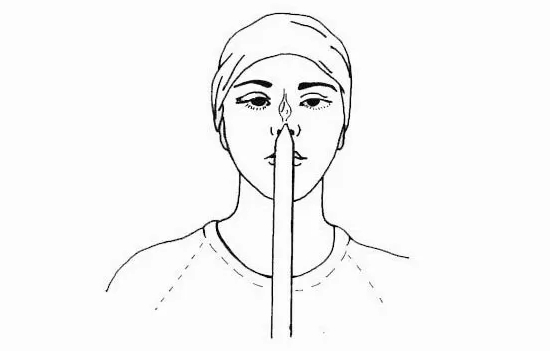
Trataka is
a classical yogic technique that involves steady gazing at a fixed point,
traditionally a candle flame. This practice is known to enhance visual-spatial
attention, which directly supports working memory function. By training the
mind to sustain focus on a single visual object, Trataka strengthens the neural
networks responsible for attentional control and mental imagery.
Nadi Shodhana (Alternate Nostril Breathing)
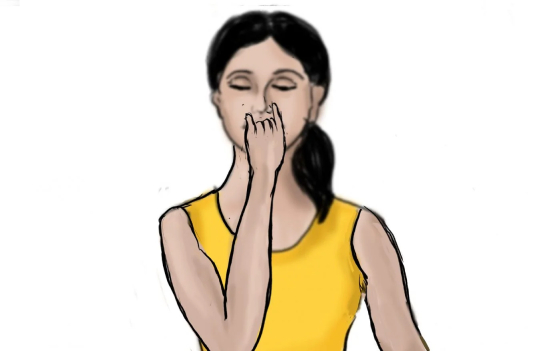
Nadi
Shodhana is a balancing pranayama technique that involves breathing alternately
through the left and right nostrils. It is particularly effective in enhancing
cognitive flexibility, improving concentration, and reducing mental
distractions. These benefits are essential for optimizing working memory, which
thrives in a calm yet alert mental state.
To perform this practice, one sits in a meditative posture. Begin by closing the right nostril with the thumb and inhaling through the left. Then close the left nostril with the ring finger and exhale through the right. Inhale through the right, switch again, and exhale through the left—completing one round.
Kapalabhati
Kapalabhati
involves rapid, forceful exhalations through the nose accompanied by active
abdominal contractions, which stimulate the prefrontal cortex and invigorate
the nervous system. This sharpens alertness and clears mental fog.
After
completing two to three rounds of Kapalabhati, one can transition into mindfulness
meditation, where the focus shifts to observing the breath or bodily sensations
with non-reactive awareness.
Typically,
Kapalabhati is performed by sitting upright, inhaling normally, and then
executing quick exhalations followed by brief rest. It is important to note
that Kapalabhati should be avoided by individuals with high blood pressure,
pregnancy, or recent surgeries.
2. Short-Term Memory
Short-term memory refers to the brain’s ability to hold small pieces of information for a brief duration—typically from a few seconds to a couple of minutes. It enables us to retain what someone just said in a conversation, recall directions we’ve just heard, or process visual and verbal inputs temporarily before they’re either discarded or encoded into long-term memory. While closely related to working memory, short-term memory is more passive and primarily serves as a temporary holding space.
Bhramari Pranayama (Bee Breath)
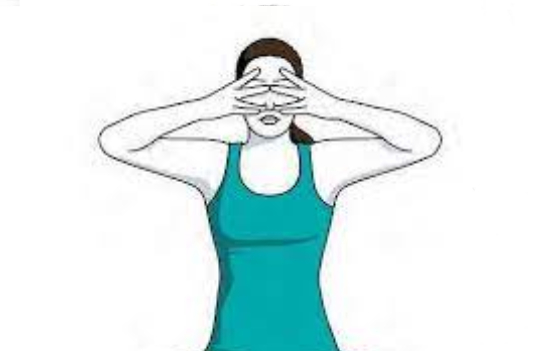
Bhramari
Pranayama is a calming breathing technique that involves producing a gentle
humming sound during exhalation. This practice creates subtle vibrations that
stimulate the auditory pathways and calm the nervous system, making it particularly
effective for enhancing auditory short-term memory. The vibrations are believed
to activate areas in the temporal lobe, which are responsible for processing
sound and speech.
Mindful Asana
Practice (e.g., Vajrasana, Tadasana)
Engaging in
asanas with mindful awareness promotes integration between the body and mind,
which is essential for improving short-term memory consolidation.
Postures
such as Vajrasana (Thunderbolt Pose) and Tadasana (Mountain Pose) are simple
yet effective when practiced with attention to breath, alignment, and internal
sensations.
This kind
of embodied awareness activates sensorimotor areas and strengthens neural
pathways involved in spatial and kinesthetic memory. During the practice,
maintaining a calm breath and focused awareness on bodily movement fosters the
kind of attentive state necessary for encoding short-term information
efficiently.
Japa (Mantra Repetition)
Japa, or
the repetitive chanting of a mantra, is a traditional yogic technique that
enhances linguistic recall and sharpens mental clarity. Repetition of sound
patterns engages phonological loops in the brain, which are responsible for
holding verbal information.
Whether chanted silently or aloud, mantra repetition improves concentration and creates rhythmic neural entrainment, making the mind more receptive and attentive. For practice, one may choose a simple mantra such as “Om” and repeat it consistently for several minutes, using a mala (prayer beads) if desired.
3. Long-Term Declarative Memory
Long-term declarative memory refers to our
conscious ability to recall factual knowledge, personal experiences, and
learned concepts. It encompasses semantic memory (knowledge of facts and
meanings) and episodic memory (personal life events). This type of memory is
central to learning, academics, professional development, and informed
decision-making. Unlike short-term memory, which fades quickly, long-term declarative
memory can last for years or even a lifetime.
Mindfulness
Meditation

Mindfulness meditation, particularly when practiced regularly and with focused awareness, has been shown to enhance hippocampal plasticity—the brain’s ability to form new memory connections. The hippocampus is the central hub for consolidating long-term declarative memories.
During mindfulness practice, the individual
sits in a comfortable posture and gently places attention on the breath, bodily
sensations, or a chosen point of focus. Thoughts are observed without judgment
and allowed to pass naturally. This non-reactive mental state reduces mental
clutter and promotes the clarity needed for effective encoding and retrieval of
information. Over time, consistent mindfulness training leads to better
emotional regulation and increased capacity to absorb, reflect, and remember
complex information.
Yoga
Nidra
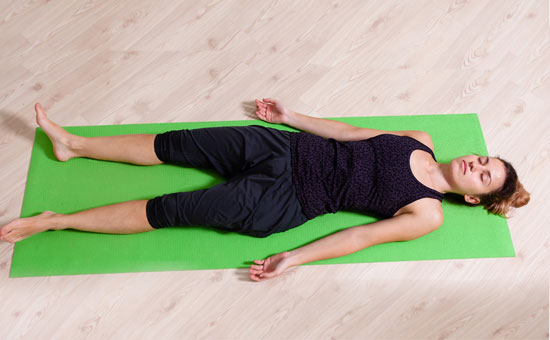
Yoga Nidra, or yogic sleep, is a guided
meditative practice that induces a deeply relaxed state between waking and
sleeping. In this state, brain waves shift into slower frequencies, allowing
subconscious material to emerge and be integrated.
Yoga Nidra facilitates the consolidation of
memory by helping the nervous system process and store information beyond the
level of conscious effort. Practiced while lying in Shavasana, the session
typically involves systematic rotation of awareness through the body, breath
observation, and guided imagery.
This process creates an ideal inner
environment for long-term memory formation, especially for experiences or
knowledge that benefit from emotional and intuitive encoding.
Additional
Practices to Support Long-Term Memory
Beyond the core techniques, traditional yogic
practices such as Svadhyaya (self-study), Dharana (focused concentration), and
Bhakti-oriented rituals (like mantra and kirtan) offer powerful methods to
strengthen long-term declarative memory. These tools enhance the emotional,
semantic, and spiritual encoding of information, allowing for deeper, more
integrated recall over time.
4.
Procedural Memory
Procedural memory is a type of long-term implicit memory responsible for knowing how to perform tasks and movements without consciously thinking about them. It governs motor skills, routines, and embodied actions—such as tying shoelaces, riding a bicycle, or flowing through a Surya Namaskar sequence from memory.
Unlike declarative memory, which involves
conscious recollection of facts and experiences, procedural memory operates
beneath awareness and is deeply tied to repetition, body coordination, and
muscle memory.
Vinyasa
Flow Sequences
Vinyasa refers to a dynamic style of yoga that
links movement with breath in a fluid sequence of asanas. These flows emphasize
continuous movement, rhythm, and coordination, which are essential for
developing and refining procedural memory.
As practitioners repeat sequences such as Sun
Salutations (Surya Namaskar) or warrior flows, the brain maps the movement
patterns more efficiently, allowing the body to perform them with minimal
conscious effort. Over time, the sequencing becomes automatic, demonstrating
how embodied repetition anchors movement in implicit memory.
Surya
Namaskar
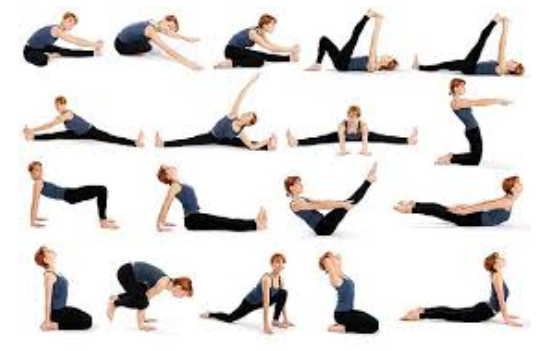
Surya Namaskar (Sun Salutation) are powerful practices that integrate breath, movement, and attention—three core components of embodied memory formation. It is a rhythmic sequence of twelve postures, is traditionally practiced in repetitions, allowing the sequence to be encoded deeply into neuromuscular memory. Once internalized, the practitioner can flow through the sequence without verbal cues, illustrating the strength of procedural memory in action.
5.
Emotional Memory
Emotional memory refers to the brain’s ability to store and recall experiences that are charged with emotional significance. These memories—whether joyful, traumatic, or deeply touching—tend to be more vivid and enduring than neutral events.
They influence not only how we remember the
past but also how we respond to situations in the present. Emotional memories
are strongly linked to the limbic system, particularly the amygdala and
hippocampus, which govern affective processing and memory consolidation.
Bhakti
Yoga (Devotional Practices)
Bhakti Yoga is the path of devotion,
encompassing practices such as chanting, singing, prayer, and surrender to the
Divine. These practices channel emotional energy toward higher states of love,
compassion, and surrender, allowing the practitioner to transform emotionally
charged memories into sources of inner strength and peace.
Engaging in kirtans (devotional singing),
reciting prayers, or expressing heartfelt devotion through rituals creates a
safe and sacred space to process emotional experiences. By fostering deep
emotional expression in a non-reactive, spiritually grounded context, Bhakti
Yoga allows for the release of emotional burden and integration of healing.
Chakra
Meditation (Focusing on Anahata and Ajna)
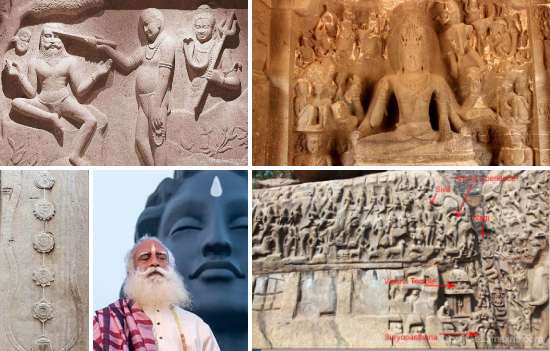
Chakra meditation is a subtle practice that involves focusing on the body’s energy centers to balance physiological and emotional states. Emotional memory is particularly influenced by the Anahata (heart) chakra, which governs love, compassion, and emotional openness, and the Ajna (third-eye) chakra, associated with insight and emotional regulation.
During chakra meditation, the practitioner sits quietly, focuses on the location of the chakra (e.g., the center of the chest for Anahata), visualizes a symbolic colour (such as green for Anahata or indigo for Ajna), and silently repeats a bija mantra (such as “Yam” for the heart or “Om” for the third eye). Over time, it encourages more compassionate and intuitive responses to past experiences.
Visualization
with Mantra
This integrative practice combines mental imagery with sacred sound to transform the emotional tone of stored memories. Visualization activates the same neural circuits involved in memory recall, allowing the practitioner to consciously reshape emotional patterns. For example, one may visualize a peaceful scene—a serene temple, a loving deity, or a glowing light—while chanting a calming mantra such as “Om Shanti” or “So Hum.”
This coupling of imagery with vibration
re-wires the emotional imprint by overlaying it with a more positive,
stabilizing affect. Such practices can be especially helpful after recalling
distressing events, serving as a tool to neutralize emotional charge and create
a new, empowering association.
6. Other Types of Memory Yoga Can Influence
Beyond
working and long-term memory, yoga also supports several subtle and impactful
forms of memory essential to daily life, learning, and personal identity.
Sensory Memory stores raw sensory input for a brief moment. Practices like Trataka (focused gazing), Pratyahara (withdrawal of senses), and Nada Yoga (sound meditation) sharpen perception and enhance the brain’s ability to encode information from the senses.
Autobiographical Memory, the memory of personal life events, shapes identity and emotional
understanding. Yoga Nidra, reflective journaling, and Atma Vichara
(self-inquiry) help process emotional experiences, integrate trauma, and foster
deeper self-awareness.
Prospective Memory is the ability to remember future intentions. Sankalpa (intention-setting)
and breath awareness during transitions improve focus, goal alignment, and
consistency in action.
Semantic Memory, related
to meanings and concepts, is strengthened through Svadhyaya (study of texts)
and mantra chanting with understanding. These deepen comprehension and support
long-term learning.
Collective or Cultural Memory involves inherited wisdom and tradition. Chanting lineages, rituals,
and shared practices like the Common Yoga Protocol help preserve cultural
identity and create a sense of belonging.
Conclusion
Memory is multifaceted—spanning focus, learning, movement, emotion, and identity. Yoga, when practiced with intention, offers specific tools to strengthen each of these layers. From breathwork that sharpens attention to meditation that anchors long-term recall, yoga empowers us to engage memory not just as a mental function, but as a doorway to self-awareness and healing.
By aligning practices with different memory types, we can enhance not only cognitive clarity but also emotional balance and inner coherence. In doing so, yoga becomes a path to remembering who we truly are—beyond forgetfulness, beyond distraction.
Key Takeaways
1. Memory has many forms—working, short-term, long-term, emotional, and more.
2.
Yoga offers specific tools to support each type of memory.
3.
Breath work, meditation, mantra, and movement enhance focus, recall, and
emotional balance.
4.
Practices like Trataka, Yoga Nidra, Surya Namaskar, and Bhakti
Yoga can target memory improvement holistically.
With consistent practice, yoga strengthens not just memory, but
overall mental clarity and self-awareness
In the next article, we will explore “Pranayama and Memory: The Breath–Intellect Connection”—unpacking how breathwork impacts brain function, enhances cognitive clarity, and bridges ancient yogic wisdom with modern neuroscience.
References
1.
Yadav A, Verma S, Panwar M, Yadav NK. Role of Yoga practices on cognitive
functions: A review. International Journal of Health Sciences.
2022(III):3288-304.
2.
Luu K, Hall PA. Hatha yoga and executive function: a systematic review. The
Journal of Alternative and Complementary Medicine. 2016 Feb 1;22(2):125-33.
3.
Mironova OV, Yarchikovskaya LV, Khismatullin SA, Sharonova AV, Kiprushina II.
Influence of yoga on the memory of practitioners. Theory and Practice of
Physical Culture. 2023(7):67-9.
Authors are Dr. Natesh Babu, Director, CODE, S-VYASA and Dr. Atmakur Snigdha Madhuri, Assistant Professor, CODE, S-VYASA. www.svyasadde.com
S-VYASA stands for Swami Vivekananda Yoga
Anusandhana Samsthana. CODE stands for Centre for Open and Distance
Education
Copyright SVYASA
To read all articles in Yoga section
To read all
articles on Therapy
To read
all articles on Meditation
To read
about Yoga Nidra
To
read about Ajna Chakra
To
read How to Meditate in a Metro Train